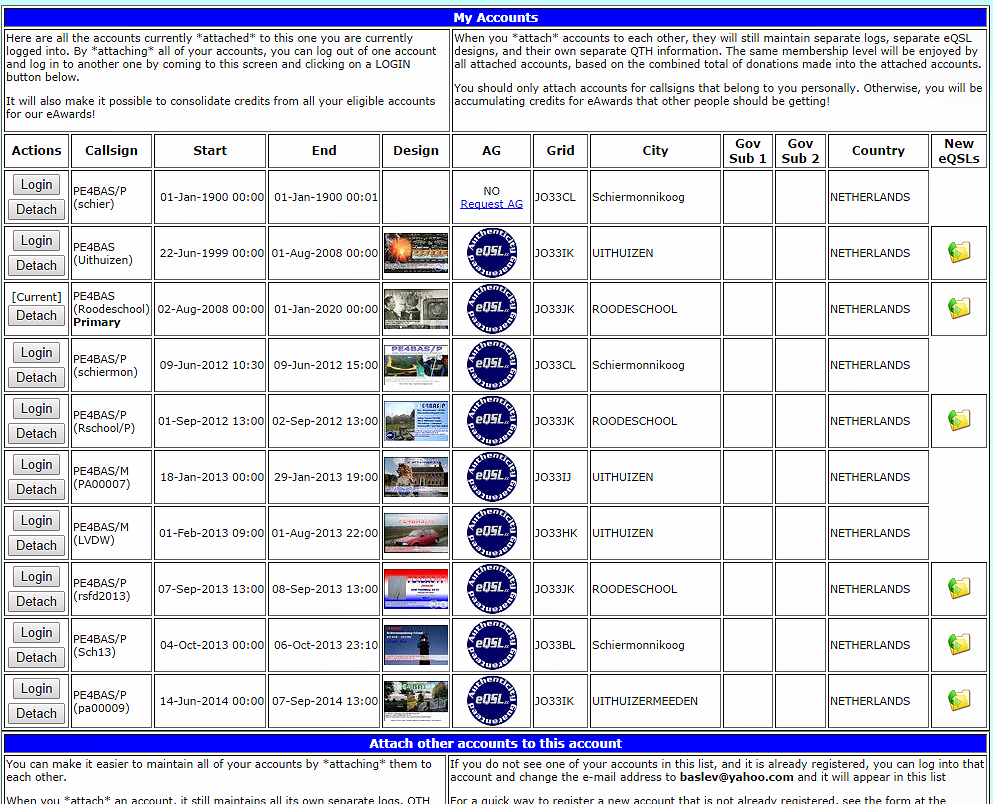Although I have some experience in building HB9CVs for 11m I didn't manage to build one which completely satisfy me in terms of simplicity, mechanics, bandwidth and SWR. Long time ago I came across a HB9CV design that worked without a capacitor to match the impedance. That means this antenna would be simple and manage unlimited power. I was already planning to rebuild the HB9CV built last year. I made another construction and designed it for 28MHz flat instead of 28,5MHz. In this design the "gammamatch" ,if you can call it like that, is 2 times longer as the original design, that will say the distance between the boom and were it is mounted on the radiators.
 Not trusting designs like this I didn't expect it would properly work but it does actually. SWR at the original design I found was 1:1,4 R=43 X=7. Not bad at all, SWR stays below 1:2 between 27,5 and 28,5 MHz. So I made the elements all 1cm shorter and now the resonance shifted to 28,1 MHz. Since I made the "gammamatch" so it could slide over the radiators I tested if the distance between the mounting point and the boom should be longer or shorter. Till now making it longer giving me a best SWR of 1:1,2 R=45 and X=7. Not bad but of course I would like to try for 1:1 or at least as close to that as possible, however SWR is not the holy grail. What I was afraid of is how it would affect the radiation pattern. But walking around the antenna with the fieldstrength meter and the whip horizontal shows a max. in the front and a complete nul on the backside. It seems that it doesn't matter were you connect the "gammamatch" as long is you keep the relation in distances.
Not trusting designs like this I didn't expect it would properly work but it does actually. SWR at the original design I found was 1:1,4 R=43 X=7. Not bad at all, SWR stays below 1:2 between 27,5 and 28,5 MHz. So I made the elements all 1cm shorter and now the resonance shifted to 28,1 MHz. Since I made the "gammamatch" so it could slide over the radiators I tested if the distance between the mounting point and the boom should be longer or shorter. Till now making it longer giving me a best SWR of 1:1,2 R=45 and X=7. Not bad but of course I would like to try for 1:1 or at least as close to that as possible, however SWR is not the holy grail. What I was afraid of is how it would affect the radiation pattern. But walking around the antenna with the fieldstrength meter and the whip horizontal shows a max. in the front and a complete nul on the backside. It seems that it doesn't matter were you connect the "gammamatch" as long is you keep the relation in distances.2 things to do. I'm not satisfied about the connection between the boom and the elements. I have to change it a bit. And making the "gammamatch" wires a little longer to see if I can get a even better match.
This experiment has potential and I hope to get a fine working antenna out of it.
Related links on this blog:
The HB9CV revisited 1
The HB9CV revisited 2
Progress building the HB9CV
HB9CV test

























